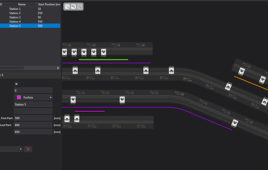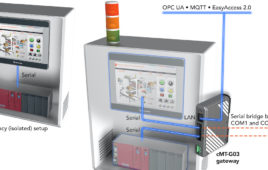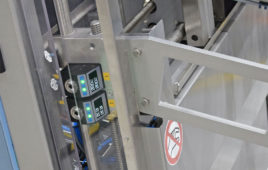Submersible remote-controlled machines are to be created that will accelerate the clean-up operation at nuclear sites such as disaster-stricken Fukushima Daiichi.
When built, the technology will, for the first time, be able to assess radiation – particularly neutron and gamma-ray fields – under water to check the safety and stability of material within submerged areas of nuclear sites.
The technology could also be used to speed up the removal of nuclear waste from decaying storage ponds at the Sellafield Reprocessing facility in Cumbria – shortening decommissioning programmes and potentially delivering significant savings for taxpayers.
Led by engineers at Lancaster University, and involving colleagues at the University of Manchester, Hybrid Instruments Ltd. as well as Japanese partners, the international research project, which is funded by the Engineering and Physical Sciences Research Council, will develop a remote-controlled vehicle that can go into these harsh submerged environments to assess radiation levels.
When Fukushima was hit by huge Tsunami waves in the wake of the most powerful earthquake ever to hit Japan, the cores of three of the six reactors were damaged and had to be flooded by sea water to keep them cool to prevent more extensive damage.
Nuclear fuel debris needs to be removed to enable safe decommissioning of the reactors, however it is not known how much there is, its condition and the likelihood of accidental reactions being triggered. New detection instruments developed through the project will help identify nuclear fuel and help operators to deal with it safely.
Malcolm Joyce, Professor of Nuclear Engineering at Lancaster University and lead author of the research, said: “A key task is the removal of the nuclear fuel from the reactors. Once this is removed and stored safely elsewhere, radiation levels fall significantly making the plant much more safer, and cheaper, to decommission.
“Our research will focus on developing a remote-operated submersible vehicle with detection instruments that will be able to identify the radioactive sources. This capability does not currently exist and it would enable clean-up of the stricken Fukushima reactors to continue.”
Engineers at Lancaster University have expertise in radiation detection technology and experts at the University of Manchester will concentrate of developing the remote-operated vehicle.
Barry Lennox, Professor of Applied Control at the University of Manchester said: “A key challenge with the remote-operated vehicle will be to design it so that it can fit through the small access ports typically available in nuclear facilities. These ports can be less than 100 mm in diameter, which will create significant challenges.”
This two and a half-year international research project also involves Japanese partners, including the Japan Atomic Energy Agency, the National Maritime Research Institute of Japan and the Nagaoka University of Technology.
There is potential for the resulting technology to also be used by the oil and gas sector for assessment of naturally-occurring radioactive material in offshore fields.
Professor Philip Nelson, Chief Executive of the Engineering and Physical Sciences Research Council, said: “The disaster at Fukushima has created massive challenges for Japan, the safe removal of the fuel rods from the site is just one, but it is a critical step in decommissioning the plant and its material. This EPSRC-funded research will provide the authorities with the tools to assess the site and prepare for removal. EPSRC is proud to be assisting this international project.”
Filed Under: M2M (machine to machine)




